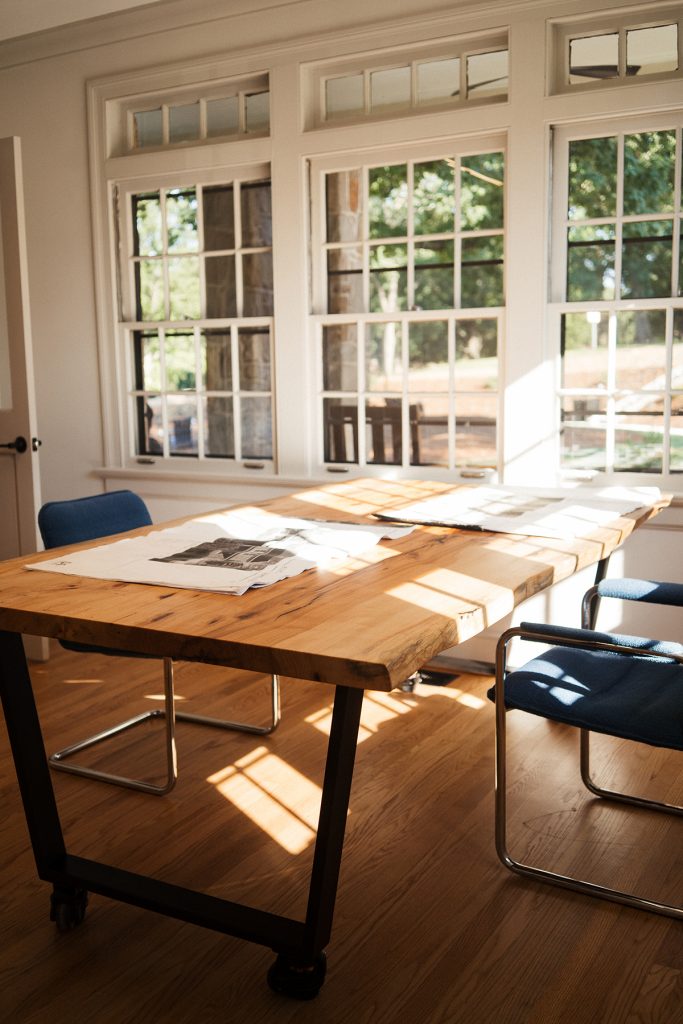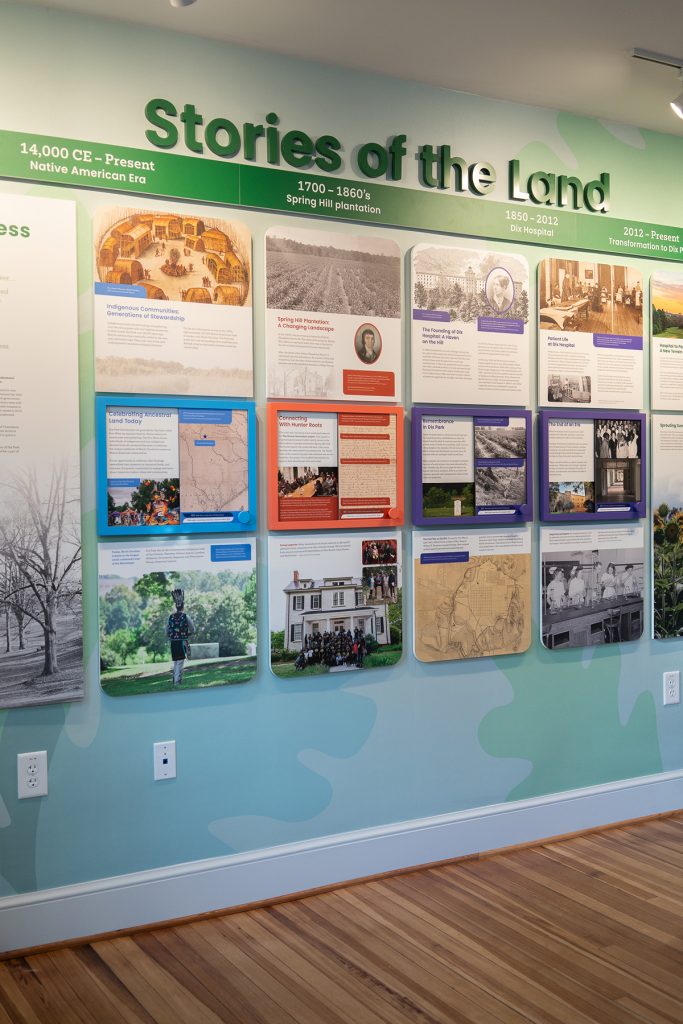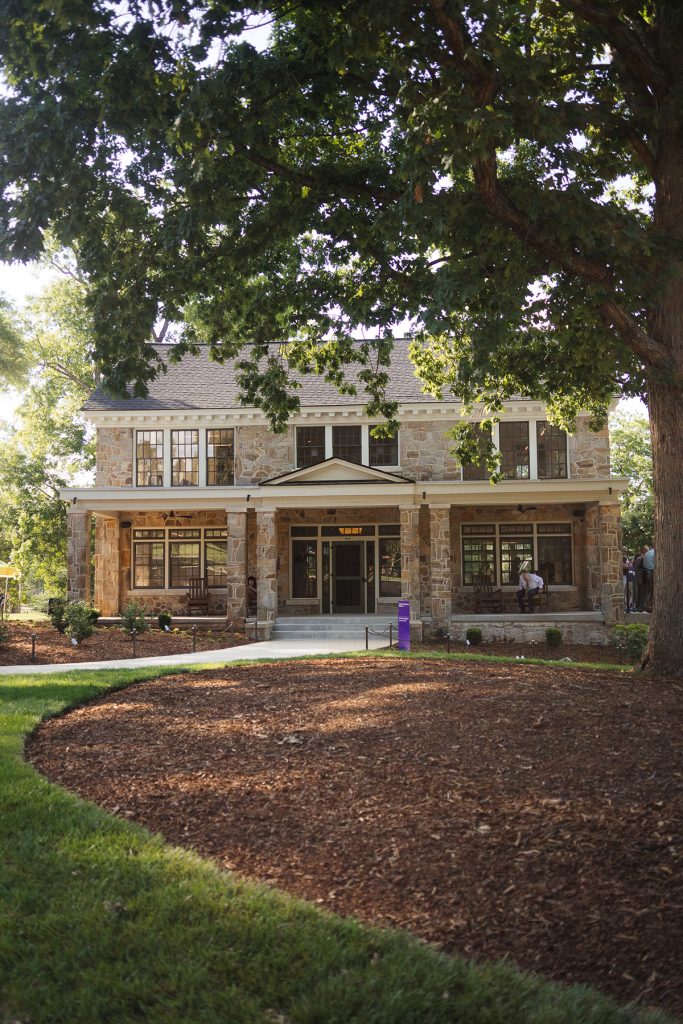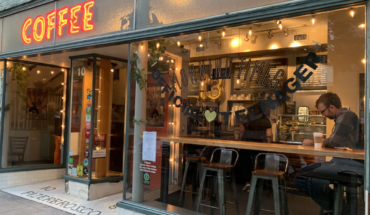Three 1920s-era stone cottages at the main entrance to Dix Park begin their next era as a visitors center and community spaces.
by Ayn-Monique Klahre | photography courtesy Dix Park Conservancy
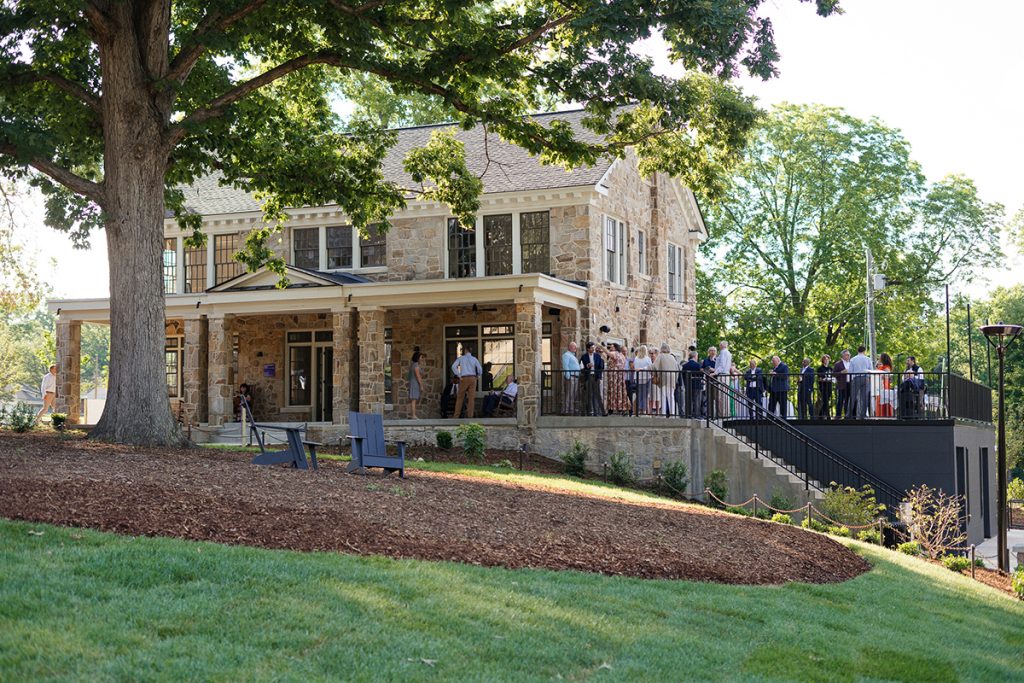
Diana Barefoot knows the Gatekeeper’s Cottage inside and out. She lived here, in what’s now Dorothea Dix Park, with her family from 1977 to 78 when her then-husband, Glenn Withrow, was a medical officer at Dorothea Dix Hospital. Their daughter Rebecca Withrow remembers playing with her two siblings in the attic. “It’s all so different now — everything was woods,” says Barefoot. “But they kept the latticework in the windows; I remember those details.”
Her cottage, along with the Superintendent’s House and Physicians’ House, are collectively known as the Stone Cottages. They were built in 1923 in the growth spurt after World War I and reflected the specialization of the staff for the expanding hospital, which was, at the time, a progressive mental health facility.
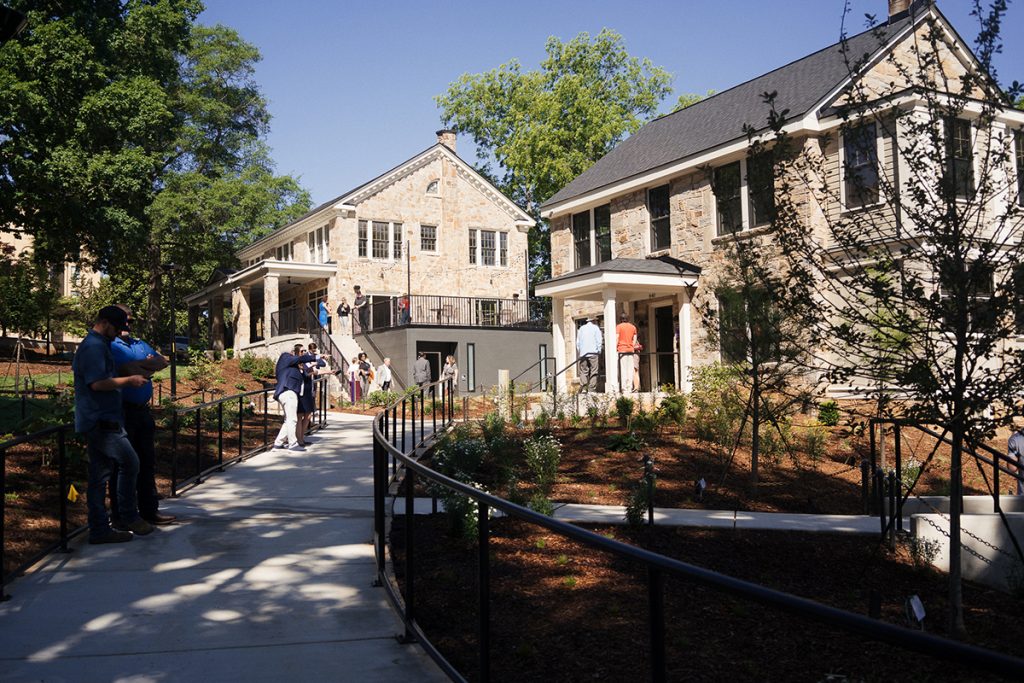
In the 1990s, the Gatekeeper’s Cottage, which was originally near the current intersection of Western Boulevard and S. Boylan Avenue, was moved to join the other two residences. And for the past few years, architect David Maurer and his team at Maurer Architecture have been working with the Dix Park Conservancy, with financial support from the State Employees’ Credit Union (SECU) and the SECU Foundation, to renovate these buildings to reflect the evolution of Dix Park.
On June 1, the three cottages were reopened for public use. The Stone Cottages now include a visitors center, offices for the Dix Park Conservancy and the City of Raleigh, a studio space for an artist-in-residence, and — perhaps most saliently to fans of the park and the adjoining Greenway — public restrooms. “The Stone Cottages will provide a much more welcoming entrance into the park, to make it a place where people can really linger and enjoy themselves,” says Janet Cowell, the CEO of Dix Park Conservancy.
Each of the spaces has been meticulously preserved, from the woodwork to the moldings to the stone exteriors. The furnishings include conference tables by Raleigh Reclaimed, made from pecan trees that used to stand in the park. Inside the visitors center, an interactive exhibit traces the park’s complicated history: from land used by Native Americans, to its days as a plantation, to its time as a psychiatric institution and to the present day.
Maurer, a longtime resident of nearby Boylan Heights, remembers jogging by the cottages 30 years ago. “I was always curious about the houses and hoped they would get fixed up. It was a privilege and truly a team effort to turn these into cool spaces for things to happen,” he says.
General contractor Eric Brinker of The Northgate Group worked on the homes. “It’s been a transformative project for Raleigh, and it looks just like we envisioned,” Brinker says. “I’m proud to be part of the team creating this legacy for the park.”
This article originally appeared in the July 2024 issue of WALTER magazine.

